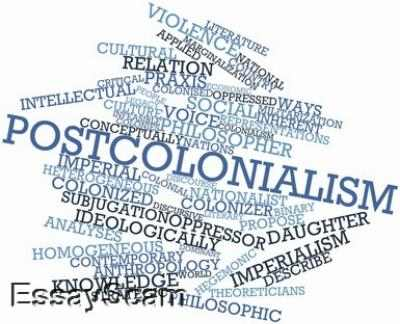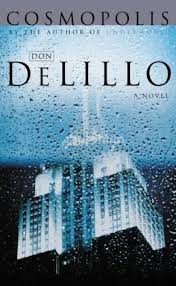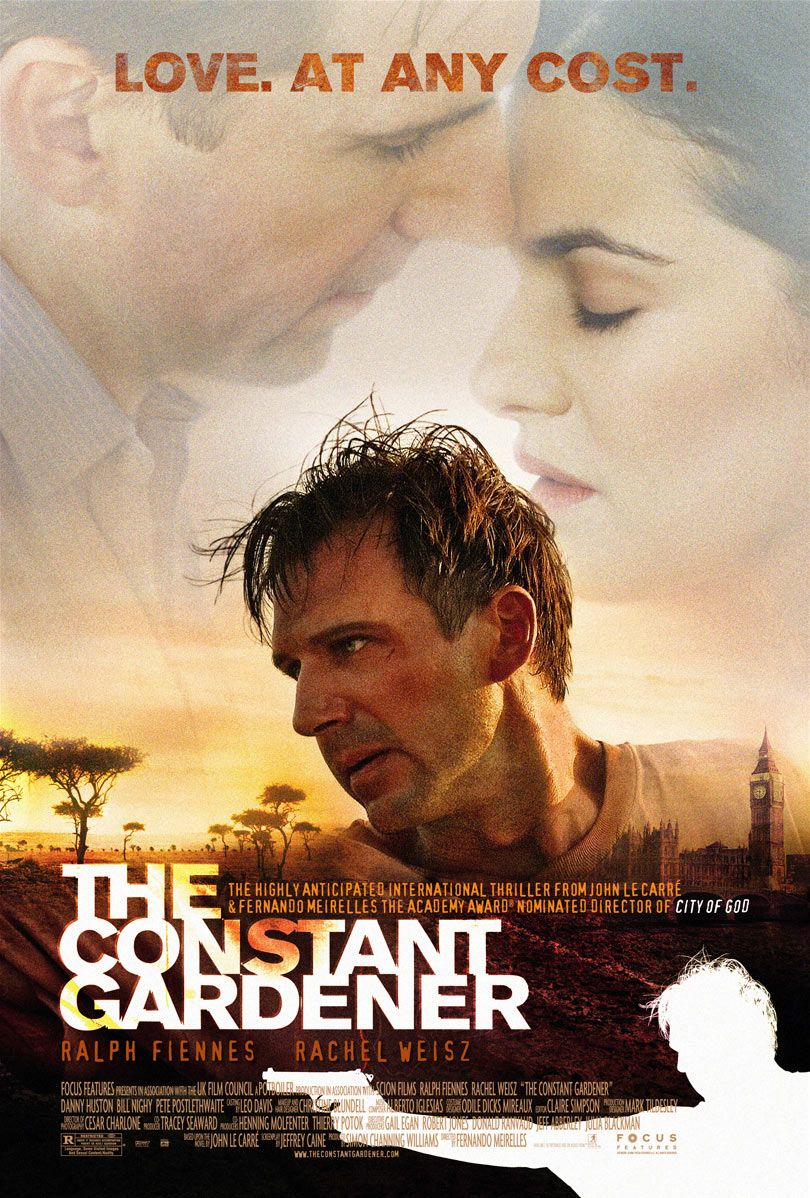Hello Everyone, This blog is part of thinking activity which based on Unit of 1) Globalization and the Future of Postcolonial Studies - Ania Loomba - Colonialism/Postcolonialism 2) Future of Postcolonial Studies - Ania Loomba - Colonialism/Postcolonialism.
- Assigned by Dr. Dilip Barad Sir.
- Based on the article analyze how globalization reshapes postcolonial identities. How does global capitalism influence the cultural and economic dimensions of postcolonial societies? Can you relate this discussion to films or literature that depict the challenges of postcolonial identities in a globalized world?
Globalization's Impact on Postcolonial Identities:
Globalization has redefined the traditional framework of postcolonialism, which historically focused on the relationship between colonizers and the colonized. The article emphasizes how the post-9/11 world, marked by the rise of the New American Empire and the Global War on Terror, has further muddied the waters of postcolonial identity. Postcolonial societies, which once grappled primarily with the legacies of European colonialism, are now confronted with a more complex global order, dominated by transnational networks and the fluid movement of capital, ideas, and people.
Globalization dissolves the strict dichotomies of center and periphery that are fundamental to postcolonial theory. Instead, it introduces a world where identities are shaped by transnational flows, regional interactions, and the dissolution of geographical boundaries. In such a world, postcolonial identities are no longer fixed or singular; they are hybrid, fluid, and constantly evolving. This hybridization often leads to identity crises, as individuals and communities struggle to maintain cultural authenticity while integrating into a globalized system that frequently demands conformity to Western capitalist norms.
Global Capitalism and Its Influence on Postcolonial Societies:
The article highlights the central role of global capitalism in reshaping both the economic and cultural landscapes of postcolonial societies. Thomas Friedman’s concept of a “Flat World” suggests that globalization has leveled the playing field through technology and connectivity. However, scholars like Joseph Stiglitz and P. Sainath argue that this is an illusion; global capitalism exacerbates inequality rather than alleviating it. For postcolonial societies, this manifests in several ways:
- Economic Exploitation: Global capitalism often benefits multinational corporations at the expense of developing postcolonial nations. These countries are integrated into global supply chains, but this integration usually involves the extraction of resources and labor without fair compensation, leading to economic dependency rather than self-sufficiency.
- Cultural Erosion: The spread of Western consumer culture through global capitalism threatens the cultural integrity of postcolonial societies. As these societies are exposed to the forces of global markets, their traditional values, languages, and practices are often marginalized in favor of Western ideologies, creating cultural homogenization.
Relating This Discussion to Films and Literature:
Literature :
1) The God of Small Things by Arundhati Roy: In this novel, the characters’ lives are deeply affected by the lingering impact of British colonialism and the pressures of globalization. Roy critiques global capitalism, particularly how it influences the caste system and the marginalization of lower-caste individuals. The novel suggests that, in a globalized world, postcolonial societies continue to grapple with both internal and external systems of oppression. Roy also addresses how the global market commodifies culture, forcing individuals in postcolonial societies to adapt to Western standards, often at the cost of their own identity and history.
2) Midnight’s Children by Salman Rushdie: Rushdie’s Midnight’s Children explores the postcolonial identity of India in the wake of independence, and later, during the Emergency period. Globalization influences the narrative as characters grapple with the complexities of identity in a rapidly modernizing world. Saleem Sinai, the protagonist, embodies the fractured identity of a postcolonial nation caught between its historical legacies and the forces of modern global capitalism. The novel reflects on how cultural and political identities are continually reshaped by external influences, particularly the pressures of global capital.
Movie :
The Reluctant Fundamentalist :
The Reluctant Fundamentalist (2012), based on Mohsin Hamid’s novel, serves as an excellent example of how global capitalism complicates postcolonial identities. The protagonist, Changez, a Pakistani immigrant in the U.S., rises to success in the corporate world but becomes disillusioned by the inherent exploitation and cultural erasure promoted by global capitalism. His journey reflects the internal conflict experienced by postcolonial individuals who must reconcile their heritage with the demands of a globalized economy.
Slumdog Millionaire:
Slumdog Millionaire (2008), which portrays the lives of impoverished Indians against the backdrop of a rapidly globalizing Mumbai. The film depicts the stark contrast between local traditions and the encroachment of global capitalism, symbolized by Western corporations, urbanization, and the global media. The protagonist’s rise to fame through a Western-style game show further illustrates the complexity of identity in a postcolonial world shaped by global forces.
Rang De Basanti :
The film Rang De Basanti has been looked at from different viewpoints. One view highlights how the movie can motivate young people to become more active citizens. Another view looks at how the film deals with themes like violence, patriotism, and nationalism. Both agree that the film had a strong influence on South Asian audiences, but they have different opinions on its overall effect.
- Drawing from explore how contemporary fiction offers a critique of globalization from a postcolonial lens. How do authors from postcolonial backgrounds navigate themes of resistance, hybridity, or identity crisis in their works? Consider analyzing a film that addresses similar issues.
Themes of Resistance, Hybridity, and Identity Crisis:
Resistance: In Don DeLillo’s Cosmopolis, anti-globalization protests highlight the violent backlash against unchecked capitalism. The novel portrays how marginalized groups resist the power of global corporations, reflecting larger societal struggles against economic domination. Similarly, Robert Newman’s The Fountain at the Center of the World focuses on the World Trade Organization (WTO) protests, where characters resist economic policies that prioritize corporate profits over human lives.
Hybridity: Postcolonial fiction often examines the hybrid identities that arise in a globalized world. In The White Tiger, Aravind Adiga depicts how Balram Halwai, the protagonist, straddles two worlds: the traditional, impoverished rural India and the rapidly modernizing, urbanized India driven by global capitalist values. Balram’s transformation into a successful businessman embodies the hybrid identity that emerges from the pressures of global capitalism.
Identity Crisis: Arundhati Roy’s The Ministry of Utmost Happiness explores the struggles of marginalized individuals who face a deep identity crisis as their communities are torn apart by globalization. Roy delves into how characters, such as transgender and lower-caste individuals, grapple with their place in a society that marginalizes them further in the name of development and global progress. The novel reflects how postcolonial identities are fragmented as they confront the forces of modernity and tradition.
- Using , discuss how postcolonial studies intersect with environmental concerns in the Anthropocene. How are colonized peoples disproportionately affected by climate change and ecological degradation? Reflect on this issue through a film that depicts ecological or environmental destruction, particularly in formerly colonized nations.
Today, humans have adopted an anthropocentric view, seeing themselves as the center of the world, with everything else existing to serve their needs. This way of thinking has led to the unchecked use of the Earth’s natural resources, often without concern for the environmental damage caused. Anthropocentrism has been part of human culture for a long time, as people have always used nature for their benefit. But with modern technology and industrial machinery, the rate of resource exploitation has grown significantly. If we don’t take action to reduce the harm we’re doing to the environment, it could lead to serious consequences for humanity in the future.
Movie : Anthropocene: The Human Epoch
Here You can see the documentary :
As part of our study on the connection between postcolonialism and environmental crises, we watched the documentary Anthropocene: The Human Epoch. The documentary clearly shows how multinational companies worldwide mass-produce goods by using up natural resources. These companies often set up factories in developing and poorer countries, where they not only pollute the air, land, and water but also exploit cheap labor for basic tasks. This environmental and economic exploitation reflects the ongoing impact of postcolonial dynamics and highlights the need to address these issues.
- From examine how Hollywood shapes global perceptions of U.S. hegemony. How do these films project American dominance, and what postcolonial critiques can be applied to these narratives? Consider selecting other films or TV series that perpetuate similar hegemonic ideals.
For example, Rambo: First Blood Part II reinterprets historical events, particularly the Vietnam War, to create a narrative that portrays non-Western countries negatively while framing the U.S. as seeking redemption for its perceived defeat. This film reflects American anxieties during the Cold War and aims to revive a sense of cultural and military pride.
Similarly, Rambo III continues this trend by presenting U.S. geopolitical goals as morally superior. Set in Afghanistan during the Soviet-Afghan War, it depicts John Rambo supporting the Mujahideen against the Soviets, framing the conflict as a moral fight against communism. This aligns with the real-life U.S. support for Afghan rebels during that period.
- In light of reflect on how the film appropriates and reimagines tribal resistance against colonial powers. How can such narratives contribute to or undermine postcolonial struggles? You could relate this to other films that portray resistance or appropriation of indigenous or subaltern heroes.
Both Raju and Bheem are admired for resisting oppressive governments that mistreated indigenous people. Raju fought the British, especially when the Madras Forest Act of 1882 restricted Adivasi access to their traditional forest lands. On the other hand, Bheem led a movement against the Nizam of Hyderabad, symbolized by the slogan "Jal, Jangal, Zameen" (Water, Forest, Land).
Indigenous communities are often the first to feel the effects of climate change, as the destruction of their lands forces them to relocate. These tribes have traditionally managed their environments well, so losing their land not only impacts their homes and cultures but also affects the broader ecosystem. Even today, indigenous communities continue to face displacement and environmental damage, not from foreign rulers, but from domestic and global corporate interests. Raju and Bheem fought not only against oppressive rulers but also against the forces of displacement and environmental destruction—issues that still threaten indigenous communities today. Their struggle was about protecting their people and their lands from exploitation.
Reference :
Barad, Dilip. “GLOBALIZATION AND FICTION: EXPLORING POSTCOLONIAL CRITIQUE AND LITERARY REPRESENTATIONS.” GLOBALIZATION AND FICTION: EXPLORING POSTCOLONIAL CRITIQUE AND LITERARY REPRESENTATIONS, October2022,
https://www.researchgate.net/publication/376371617_GLOBALIZATION_AND_FICTION_EXPLORING_POSTCOLONIAL_CRITIQUE_AND_LITERARY_REPRESENTATIONS. Accessed 22 September 2024.
Barad, Dilip. “GLOBALIZATION AND THE FUTURE OF POSTCOLONIAL STUDIES.” https://www.researchgate.net/publication/376374570_GLOBALIZATION_AND_THE_FUTURE_OF_POSTCOLONIAL_STUDIES,OCTOBER 2022.Accessed 22 September 2024.
Barad, Dilip. “Heroes or Hegemons? The Celluloid Empire of Rambo and Bond in America's Geopolitical Narrative.” Heroes or Hegemons? The Celluloid Empire of Rambo and Bond in America's Geopolitical Narrative, August 2022,https://www.researchgate.net/publication/383415195_Heroes_or_Hegemons_The_Celluloid_Empire_of_Rambo_and_Bond_in_America's_Geopolitical_Narrative. Accessed 22 September 2024.
Barad, Dilip. “POSTCOLONIAL STUDIES IN THE ANTHROPOCENE: BRIDGING PERSPECTIVES FOR A SUSTAINABLE FUTURE.” POSTCOLONIAL STUDIES IN THE ANTHROPOCENE: BRIDGING PERSPECTIVES FOR A SUSTAINABLE FUTURE, October 2022,https://www.researchgate.net/publication/376374708_POSTCOLONIAL_STUDIES_IN_THE_ANTHROPOCENE_BRIDGING_PERSPECTIVES_FOR_A_SUSTAINABLE_FUTURE. Accessed 22 September 2024.
Barad, Dilip. “Reimagining Resistance: The Appropriation of Tribal Heroes in Rajamouli's RRR.” Reimagining Resistance: The Appropriation of Tribal Heroes in Rajamouli's RRR, August 2024,https://www.researchgate.net/publication/383603395_Reimagining_Resistance_The_Appropriation_of_Tribal_Heroes_in_Rajamouli's_RRR. Accessed 22 September 2024.
Nair, Mira, director. The Reluctant Fundamentalist. 2012. Doha Film Institute Mirabai Films Cine
Mosaic, 29 August 2012 (Venice Film Festival) 26 April 2013 (United States) 17 May 2013 (India) 24 May 2013 (Pakistan). Online. Accessed 22September 2024.
Thank You for Visiting😊

















